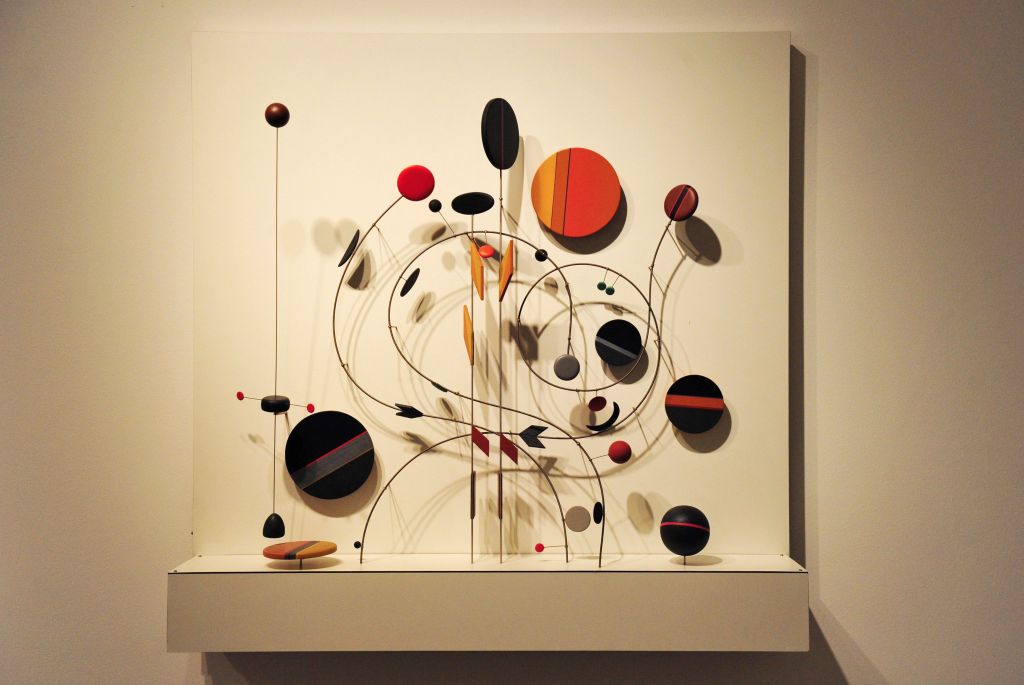[ad_1]
Abraham Palatnik, an artist who helped spur on a shift toward abstraction in the Brazilian art scene of the mid-20th century, has died at 92. G1, a Brazilian publication, reported that he died of coronavirus-related complications on Saturday in Rio de Janeiro.
Palatnik is widely considered one of the most important Latin American abstract artists for his visually striking arrangements of geometric forms. But, in the United States and Europe, his work historically has not been widely exhibited, though this has recently begun to change. One of his works from the 1950s, acquired by New York’s Museum of Modern Art as a gift from Patricia Phelps de Cisneros in 2008, was part of a survey exhibition on the subject that was part of the museum’s reopening shows in October. In his home country of Brazil, however, Palatnik has been the subject of multiple important retrospectives, the most recent of which came in 2017 at the Centro Cultural Banco do Brasil Rio de Janeiro.
Most often associated with the Grupo Frente movement of the 1950s and ’60s, Palatnik was among the first Brazilian artists to take up a style called Concretism, which envisioned formalist geometric abstraction as a pure style of art-making that referred to nothing other than itself. Formed by artist Ivan Serpa, Grupo Frente also included some of Brazil’s most important artists of all time, including Hélio Oiticica, Lygia Pape, and Lygia Clark.
While he was a member of that group, Palatnik produced works that he called “Kinechromatic Devices,” which he started making in 1949. Composed of lights and industrial materials such as metal, fabric, and wood and positioned somewhere between painting and sculpture, these objects seemed to make lush abstractions lurch into motion when activated. Mário Pedrosa, a preeminent Brazilian art critic of the era, described the works as an attempt to reinvent the Constructivist style of Laszlo Moholy-Nagy’s art, writing that the sculptures were like “frescoes of light destined to animate buildings or walls with the plastic dynamism of artificial light according to the artist’s will and inspiration.”
Despite Pedrosa’s support, Palatnik’s works were at times met with lukewarm reception. Jurors for the first Bienal de São Paulo, in 1951, included his “Kinechromatic Devices” in the exhibition only begrudgingly, though they wound up awarding him an honorable mention. Today, however, they are considered important early experiments with art and technology that paved the way for future uses of machinery by artists. But, because the machinery for them is delicate, the “Kinechromatic Devices” have rarely been exhibited outside of Palatnik’s studio in Rio de Janeiro.
Abraham Palatnik was born in Natal, Brazil, in 1928 to a family of a Jewish immigrants from Russia. He moved to Palestine as a child, in 1932, and stayed there until 1947, relocating to Rio de Janeiro in 1948. In 1954, he and his brother Aminadav opened a furniture factory that operated until the mid-1960s.
In 1949, Palatnik, along with Ivan Serpa, Mário Pedrosa, and Almir Mavignier, began working with doctors at the Engenho de Dentro Psychiatric Hospital in a Rio de Jainero suburb on a program through which patients created artworks. The abstract forms that resulted from this collaboration helped spur an interest in abstraction in Brazil that would ultimately result in the formation of Grupo Frente.
After the “Kinechromatic Devices,” Palatnik moved on to making his “Progression Reliefs” series, which featured pieces of wood and cardboard that are rearranged to form abstractions. Inspired by Palatnik’s experience with furniture production, they underscore the artist’s interest in design, which also extended to the creation of machines themselves, including one that can split open coconuts.
During the height of Grupo Frente’s activity, Palatnik’s work was shown in eight of the ten São Paulo biennials staged between 1951 and 1961, as well as at the 1964 Venice Biennale in Italy. His work is now held in the collections of various notable museums, including MoMA, the Museu de Arte Moderna de São Paulo, and the Museu de Arte Moderna do Rio de Janeiro.
His art has gone on to be influential for a number of artists working with technology. In 1997, he was asked by Eduardo Kac, a much younger Brazilian artist who has made pioneering digital art, about this interest in machinery. Palatnik told him, “Technology, in the context of human evolution, acquires meaning and becomes evident to the extent that it allows the senses a conscious access to the mechanics of the natural forces.”
[ad_2]
Source link


